The Silvermere Island and lower Stave River ecosystem comprise exceptional, rare, and bio-diverse ecological communities and habitats within the lower mainland. Located about 7 kilometres west of Mission, the Stave River estuary is one of the largest spawning concentrations of salmon along the Pacific coast of North America already in direct proximity to an urban environment. Furthermore, despite its extraordinary fisheries values, the lower Stave River basin also has numerous other biological and ecosystem features that make it exceptional and these are intimately connected to the marine-derived nutrients supplied by the salmon carcasses.
Over the past few decades, the Stave River Estuary has weathered a number of environmental insults including the creation of Silvermere Lake in the downstream floodplain formed by constructing 2 causeways to Silvermere Island (which resulted in roughly 50% loss in wetland area of the lower Stave River).
Despite this historic disturbance, Silvermere lake and Silvermere Island are currently inhabited by 113 animal species, including several species at risk: endangered painted turtle, red legged frog, bald eagle (active nest), barn owl (active nest), western screech owl, double crested cormorant, and great blue heron. Almost the entire site possesses the potential to contain blue-listed plant communities. The lake is used by a myriad of migratory birds and and Silvermere Island is an important wildlife refuge.
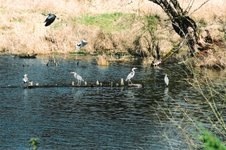 Significant rehabilitation of the aquatic ecosystem in the Stave River downstream of the Ruskin damn facility has been undertaken by BC Hydro and Fisheries and Oceans Canada over the last two decades. Extensive expenditures at the taxpayers’ expense were required to undertake this rehabilitation. Following the implementation of the fish-friendly system operations by BC Hydro and hatchery augmentation in the mid-1990s, the run of chum salmon increased from an escapement of a few thousand to over 0.5 million fish in some years.
Significant rehabilitation of the aquatic ecosystem in the Stave River downstream of the Ruskin damn facility has been undertaken by BC Hydro and Fisheries and Oceans Canada over the last two decades. Extensive expenditures at the taxpayers’ expense were required to undertake this rehabilitation. Following the implementation of the fish-friendly system operations by BC Hydro and hatchery augmentation in the mid-1990s, the run of chum salmon increased from an escapement of a few thousand to over 0.5 million fish in some years.
Within the direct proximity of Silvermere Island, there is now one of the largest chum salmon runs in the lower Fraser River. Other species of salmonids such as coho, steelhead, and char utilize this aquatic ecosystem and some of these species have been enhanced either through flow considerations, habitat rehabilitation or hatchery stocking.
But this critical ecosystem is under grave threat. Genstar Development Corporation has proposed a major housing project along the perimeter of Silvermere Lake (the Peninsula) and on Silvermere Island itself. The development of this housing project is to be situated within the lower Stave River watershed and is adjacent to, and partially on, its historic flood plain. About 94 houses have been proposed for the Island and 14 more lots are to be developed on the Peninsula, which is part of the northern causeway of Silvermere Lake. Access to the island would require construction of a 2-lane road, through the wetlands to the island.
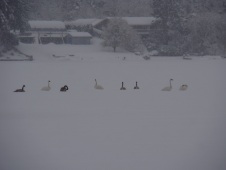
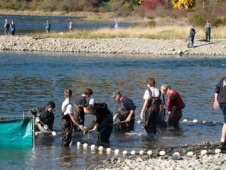 This lake development constitutes part of the large-scale loss of wetlands (greater than 90%) in the lower Fraser Basin that has occurred over the last 100 years. This project will constitute a further and major impact to these wetlands by increasingly isolating the Silvermere Lake portion of this ecosystem from the extant, relatively intact active floodplain of the lower Stave River, as well as interfering with riparian functions and adding extensive human activities (e.g., vehicle traffic to and from the Island).
This lake development constitutes part of the large-scale loss of wetlands (greater than 90%) in the lower Fraser Basin that has occurred over the last 100 years. This project will constitute a further and major impact to these wetlands by increasingly isolating the Silvermere Lake portion of this ecosystem from the extant, relatively intact active floodplain of the lower Stave River, as well as interfering with riparian functions and adding extensive human activities (e.g., vehicle traffic to and from the Island).
The devastating environmental impact of constructing a major road to Silvermere island through a wetland area, clearing vegetation to build houses, and the impacts of human occupation in this sensitive area were described by senior scientist Dr. Marvin Rosenau as “one of the most environmentally damaging development projects that (he) had occasion to review” (MWLAP, 2003). Shortly after release of his report, Dr. Rosenau was removed from his position within the Ministry of Water, Land and Air Protection (WLAP) as a fisheries habitat scientist. He was told that there was nothing wrong with his science, but that his report damaged the developer’s ability to proceed and therefore he would be given a “time-out” by the ministry. He was also told the local MLAs were already unhappy with his reports of impacts to salmon from large-scale aggregate removal in the Fraser (see Special Report: Fraser gravel mining about money not safety by Damien Gillis on thecanadian.org).
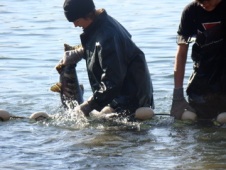
The politically motivated removal of Dr. Rosenau has sent a chill in the provincial environment ministry. A clear message has been sent that scientists could lose their jobs if they criticize development projects, a possibility referred to as being “Marvinized” by those in the ministry.
Even federal scientists from the Department of Fisheries and Oceans appear reluctant to take a stand to protect the Stave, and have allowed considerable disturbance to the area without laying charges. In Jan. 2004 the developers cleared the peninsula portion of Silvermere to within 15 meters of the lake, and deposited extensive preload without authorization from DFO. No charges were laid, and no reparations were required.
In Feb. 2006, the Stave Valley Salmonid Enhancement Society was funded by Genstar to conduct an Invasive Species Removal Study. Heavy equipment was moved onto Silvermere island and several gravel roads were constructed, some as close as a meter from the lake. Again, DFO did not intervene.
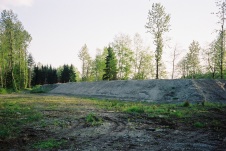 The developer’s application for harmful alteration, disruption or destruction (HADD) of fish habitat finally triggered a federal Environmental Assessment (CEEA) by DFO and Environment Canada in 2007 but was put on hold the day it was initiated on request of the developer. On Dec. 22, 2009, the CEAA (Canadian Environmental Assessment Agency) hearing was terminated by DFO without having been completed. DFO advised concerned residents to contact Environment Canada who stated that should species at risk be inadvertently killed by heavy equipment, it is not considered an offense by the ministry.
The developer’s application for harmful alteration, disruption or destruction (HADD) of fish habitat finally triggered a federal Environmental Assessment (CEEA) by DFO and Environment Canada in 2007 but was put on hold the day it was initiated on request of the developer. On Dec. 22, 2009, the CEAA (Canadian Environmental Assessment Agency) hearing was terminated by DFO without having been completed. DFO advised concerned residents to contact Environment Canada who stated that should species at risk be inadvertently killed by heavy equipment, it is not considered an offense by the ministry.
On Jan. 18, 2010, less than a month after termination of the federal assessment, Mission Council voted unanimously to vary their Streamside Protection Regulation (SPR) Bylaw on request of Genstar. Section 108 of Mission’s Zoning Bylaw would have required that a setback of 30 metres from the high water mark of Silvermere Lake be protected.
Instead of upholding the bylaw, council voted, notwithstanding recommendations by staff that this would likely result in reducing the protected areas in half to 15 metres, opening the door to residential development on Silvermere island.

Political interference in scientific assessments such as Silvermere underlies the current precipitous decline in wild pacific salmon stocks and places the financial interests of industry over the public’s interest in critical habitat conservation. A stormy combination of damaging development projects, irresponsible aggregate dredging of the Fraser River and open net fish farms spell death by a 1000 cuts to wild Fraser salmon and the wildlife that depends on it. It would appear that DFO has learned nothing from the devastating loss of cod stocks on Canada’s east coast. Clearly, the fact that the Silvermere project is even being considered again by local and senior governments signifies a breakdown in government accountability and a reluctance, or inability, to ensure the public’s interest in the environment is protected.
I would like to acknowledge Dr. Marvin Rosenau whose detailed scientific review of the impact of development in the Stave River ecosystem informed the technical aspects of this article.
Click image below to view slideshow
{gallery}k2/galleries/23/:::1:2:lytebox{/gallery}
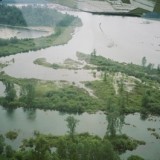

Humans are really starting to get to me… Is anyone DOING anything about it other than talking? I’m in if you are…
Update:
Tracy Lyster will be joining Alexandra Morton’s migration with a group of paddlers traveling down the Fraser River. The flotilla will stop at the Stave River/Ruskin Recreation Area Friday April 30 around noon where we will hold a short ceremony on behalf of the Stave River. People are welcome to join the migration in spirt by signing and putting messages on the canoe.
This is a wonderful article and of course to support this development they have to have the Highway 1 expansion and new Port Mann Bridge.
I would hope Mrs. Lyster would encourage members of CAUSS to not buy illegal Fraser River salmon.
Absolutely incredible and totally unacceptable.